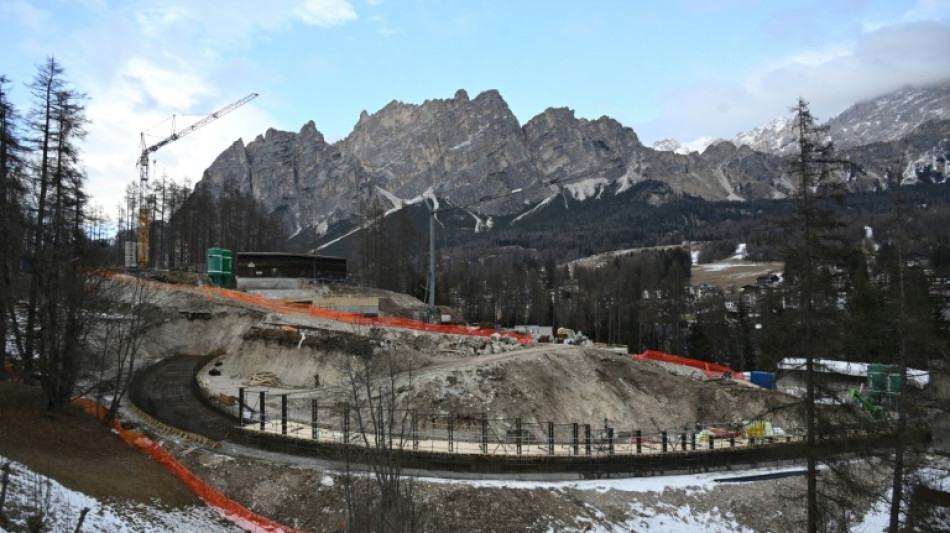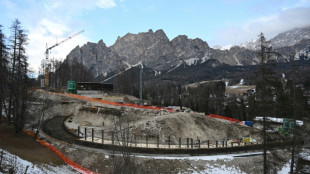

Race against time to complete contested Milan-Cortina bobsleigh track
With a year to go until the start of the Milan-Cortina Winter Olympics, organisers are racing against time to ensure the sliding events are held in Italy and not moved over 6,000 kilometres away to Lake Placid.
Twelve gold medals will be awarded for bobsleigh, luge and skeleton, events held on a track which is costly and difficult to build and has frequently caused headaches for organisers of the 2026 Winter Games.
In Cortina d'Ampezzo in the Dolomite mountains, where the women's alpine skiing events will also be held, 190 workers are working around the clock, seven days a week, to deliver a winding 1,650-metre (5,413-foot) track with 16 bends and complex refrigeration systems in time for an approval deadline in March.
Milan-Cortina's winning bid for the Olympics included the refurbishment of the Eugenio Monti track as part of its broader strategy to make use of existing sites.
But the old concrete structure, built in 1923 and immortalised in the 1981 James Bond film "For Your Eyes Only", hasn't been in use since 2008 and no longer conforms to environmental and safety regulations.
- IOC skepticism -
Italy was left without an initial bidder for the complicated renovation project and with no active bobsleigh track in despite Turin hosting the Winter Olympics in 2006.
The president of the Italian Olympic Committee (CONI), Giovanni Malago, unwittingly set off a political firestorm by announcing in October 2023 that the sliding events would be held outside the host nation.
Italy's hard-right government made a patriotic political stand against Malago's announcement, with deputy prime minster Matteo Salvini insisting that the sliding events be held in Cortina.
Italian construction company Pizzarotti ended up being the only bidder for a second tender launched by Simico, the Games' construction delivery company, worth around 120 million euros ($124.4 million).
The decision was heavily criticised by the International Olympic Committee, which pointed out that a bobsleigh track had never been built in such a short space of time, and local environmental groups who blasted the felling of hundreds if trees and questioned the track's usefulness after the Olympics.
Regardless work began in February last year, with Simico, the Games' organisers, the IOC and the bobsleigh and luge federations carrying out nervous monthly inspections.
Last month organisers and Simico admitted that getting the track ready for ready for the start of ice-making at the beginning of March and the pre-homologation of the track at the end of March was "tight and challenging".
- "150 metres a day" -
However on Friday, Simico told AFP: "We are on schedule, the pre-homologation will take place over March 24-30."
Olympic Games Executive Director Christophe Dubi was also positive, telling AFP that "nothing indicates that they will not get it done on time".
"But time is running out, they are completing little more than 150 metres of track per day," Dubi added.
A source with access to the inspection reports, who spoke under condition of anonymity, also told AFP that "pushing back the pre-homologation of the track to April is a possibility".
However organisers have also had to prepare a back-up plan that could be implemented in the event that the Cortina track is not completed on time, as required by the IOC, with Lake Placid in New York state surprisingly picked ahead of Innsbruck and St. Moritz, which are both a stone's throw from Italy.
"It's the most economically practical solution (...) because the other tracks needed a firm commitment from us as early as last year in order to undertake renovation work," Milano Cortina 2026 boss Andrea Varnier explained to AFP.
"But we're pretty sure and optimistic that there will be no need for any Plan B."
馮-X.Féng--THT-士蔑報




